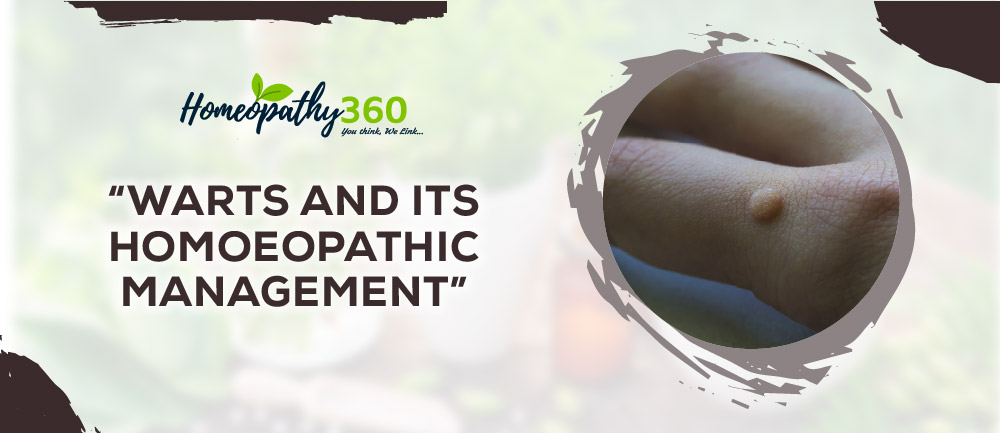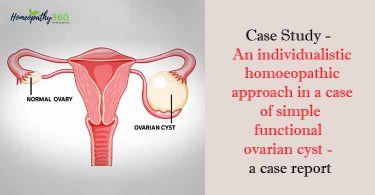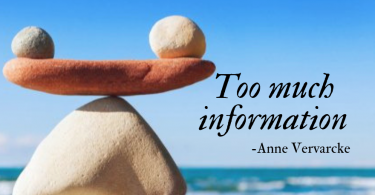
ABSTRACT:
Warts come under one sided diseases and are classified as external local maladies. They often have individualistic and immunological basis as well as familial tendencies. They belong to sycosis miasm. Although warts are local diseases, they are treated with internal remedy which is based on comprehensive understanding of the patient. This includes local symptoms, i.e. morphology and location of lesion, mental makeup of the person, and physical characteristics. This is what is called totality of symptoms. A constitutional remedy thus selected, eradicates the complaint locally as well as internally, thereby providing long lasting relief from complaints. Common remedies include Calcarea carbonica, Causticum, Dulcamara, Natrum muriaticum, Nitricum acidum, and Thuja occidentalis. Homoeopathic concept and homoeopathic treatment of warts has been described.
Keywords: homoeopathy, internal medicine, totality of symptoms, Warts.
INTRODUCTION:
As it is known, skin is the mirror of the soul! This understanding forms the basis of homoeopathic management of skin disorders.
In modern medicine, warts are understood to be caused by an infection with the human papillomavirus. Warts commonly appear on hands, feet, as well as on other areas of skin and mucous membrane.[1]
Warts are categorised on the basis of location, namely, common warts (around nails and fingers), foot warts, and genital warts. They are also understood on the basis of their morphology and texture, namely, soft, hard, flat, smooth, rough, scaly, etc. These are contagious and can spread from direct skin contact.
Warts are of diagnostic value in distinguishing between different stages of disease. The verruca vulgaris is found in children who are suffering with hereditary sycosis; they appear at or about the second dentition. The verruca filiformis comes as a tertiary lesion in an acquired form of sycosis. The verruca plana juvenilis is another hereditary form found more or less upon the back of hands and faces of children and young people. They are usually pigmented, disseminated, and in irregular, unilateral groups. [2]
Some people are just more likely to get warts than others, just like some people catch colds more easily than others do. Weakened immune system, lack of adequate rest, poor nutrition, increased stress, and close living quarters can also contribute to catching the wart virus. [3]
This denotes that warts too have an individualistic and immunological basis.
HOMOEOPATHIC CONCEPT:
As a principle, homoeopathic treatment is based on understanding of the patient as a whole which includes external signs and symptoms, mental makeup, and general physical state. This is what is called totality of symptoms. Barring types of local diseases such as minor external injuries that require a localised treatment, all other illnesses need an internal medicine which is based on comprehensive understanding of the patient as a whole.
In homoeopathic system, warts are classified under one‑sided disease, i.e. diseases which have very few expressions in terms of symptoms. Under this, they are further categorised under external‑local maladies.
Chronic diseases are classified into three main categories of miasms, namely, psora (itch), sycosis (condyloma), and syphilis (chancre or bubo). Warts come under sycosis miasm.
Local malady signifies that a visible change is localised to a particular part of the body. Any disturbance in nature of a dynamic change is never confined to a specific part of the organism in the sense that the body does not participate in the dynamic change produced by any means. [4]
This explains why only some people are affected by the virus, whereas others do not. The homoeopathic science believes that there is an internal propensity to diseases along with external virulence. This can be further reiterated by immunological basis in cases of warts. One commonly witnesses families having propensity for growths, warts, etc. These tendencies are termed miasms, as in this case sycotic.
The founder of homoeopathy, Samuel Hahnemann, has stated that by means of this medicine, employed only internally, the general morbid state of the body is removed along with the local affection and the latter is cured at the same time as the former, proving that the local affection depended solely on a disease of the rest of the body, and should only be regarded as an inseparable part of the whole, as one of the most considerable and striking symptoms of the disease.[5]
He also advises against use of topical application in local disease expressions. Since this often results in disappearance of external disease but internal; disease remains intact, thereby obscuring a complete picture. [6] Suppression, thus caused, is certain to be replacing it by some other disturbance or manifestation of sycosis.
However, in case of warts, if these have existed for some time without treatment, for a perfect cure, external application of their specific medicine as well as their internal use can be done at the same time.[7]
THERAPEUTICS:
Homoeopathic treatment of warts is largely through constitutional medicine, i.e. medicine selected on the basis of comprehensive understanding of the patient.
As there are very few or no symptoms, morphology and location of the lesion can be considered in the selection of the medicine.
Treatment is with a single well indicated remedy based on complete totality of symptoms. We often come across patients and practitioners using Thuja occidentalis or a combination of various drugs for warts. However, this is not in accordance to the principles and guidelines laid down.
A Canadian study on the treatment of plantar warts is one such example. This randomised double‑blind, placebo‑controlled trial with 162 patients prescribed three medicines to each patient (because the trial did not mix the remedies together, it is not completely accurate to call the use of these remedies a combination. It is more precise to consider it “polypharmacy,” the use of several medicines). The remedies used were Thuja occidentalis 30c, Antimonium crudum 7c, and Nitricum acidum 7c. Thuja occidentalis was taken once a week and the other two remedies were taken once a day. The trial lasted 6 weeks. The results showed that there was no noticeable difference between those subjects given the homoeopathic medicines and those given a placebo.
Many homoeopaths may be initially surprised at the result of this trial because they consider these remedies commonly effective in the treatment of warts. But while the remedies may be effective for treating warts, they are not necessarily effective for all types of warts or in all people. A recent study of homoeopathic treatment for various types of warts found that 18 of 19 people with plantar warts were cured in, on average, 2.2 months. The most common remedy was Ruta graveolens, prescribed to 12 of the 19 patients. Thuja occidentalis was prescribed for only 3 patients, and Antimonium crudum was prescribed for two patients.
This study teaches us that individualization and the use of well‑chosen remedies are necessary for most effective treatment.[8]
Homoeopathic repertory lists a number of drugs for management of warts, namely, Calcarea carbonica, Causticum, Dulcamara, Natrum muriaticum, Nitricum acidum, Thuja occidentalis, etc.
- Calcarea carbonica: Calcarea carbonica is indicated in warts which may be fleshy, horny, painful, and offensive. Patient is usually chilly, lazy and indolent, and fearsome.
- Causticum: Causticum is indicated in old, pedunculated warts, suppurating with great sensitivity to touch. Hard, horny warts that bleed easily. Deep burns and their effects. Patient is sympathetic and anxious.
- Dulcamara: Dulcamara is indicated in flat and hard warts located on backs of hands and face. Also indicated in Homoeopathic management of large warts. Patient is worse in cold, damp weather, or humidity.
- Natrum muriaticum: Warts on palms and fingers. Patient is sensitive, sentimental, reserved, and resentful. They also have marked craving for salt.
- Nitricum acidum: Nitricum acidum is large, fissured warts that itch and sting or bleed upon washing. This remedy is also indicated for people who are anxious about health and worry about cancer. Often useful for warts that have a horny wall surrounding a central depression or the more common plantar wart.
- Thuja occidentalis: The most common homoeopathic remedy for various kinds of warts. Thuja occidentalis is indicated in isolated, jagged warts that smell or bleed easily or mosaic warts on the sole of the foot. It is commonly needed for genital warts.[9]
There are number of other drugs apart from those mentioned above. Here are some illustrations.
Case1:
Aman 65 years old was suffering from multiple black warts in face, neck and throat, larger one in face for 10-12 years. Now a days it causes much itching. Patient is mentally upset for cosmetic deformity.
Patient had hot temperament, anger easily, Hopeless, despair about recovery. History of cracking in corner of mouth, baldness, aggravated by milk. Acrid urine, likes hoarse urine. After repetorisation, the remedy is Nitricum acid which is giving in LM potencies daily. Patients larger warts removed by one months.[10]
Case 2:
A girl age 12 years with warts palm and pulp of fingers, consistency hard. There is no other complaints.
The patient was intolerant to hot climate, desired for bathing, craving for salt, aversion to bread, introverted personality. After repetorisation, the remedy is Natrum muriaticum which is giving in LM potencies daily. Patient’s larger warts removed by two weeks. [10]
Above illustrations highlight improvement not only in warts but also comorbidities and overall immunity. Thereby, one can see a much more long‑lasting relief in warts. Both these cases did not require any external measures.
Declaration of patient consent:
The authors certify that they have obtained all appropriate patient consent forms. In the form the patient(s) has/have given his/her/their consent for his/her/their images and other clinical information to be reported in the journal. The patients understand that their names and initials will not be published and due efforts will be made to conceal their identity, but anonymity cannot be guaranteed.
REFERENCES
1. Mayo Clinic. Available from: http://www.mayoclinic.org/
diseases‑conditions/common‑warts/basics/causes/con‑20021715.
[Last accessed on 2016 Jan 20].2. Allen JH. The Chronic Miasms. Vol. 2. New Delhi: B. Jain
Publishers; 2007. p. 65.
3. Illinois, University of Illinois at Urbana‑Champaign, McKinley
Health Center. Available from: http://www.mckinley.illinois.edu/
handouts/warts.html. [Last accessed on 2016 Jan 20].
4. Sarkar BK. Organon of Medicine by Samuel Hahnemann with
Introduction and Commentary on Text. Kolkata: M. Bhattacharya
and Co. (P) Ltd.; 1980. p. 408.
5. Hahnemann S. Organon of Medicine. Reprint. 6th ed. New Delhi: B.
Jain Publishers; 1983. p. 236.
6. Hahnemann S. Organon of Medicine. 6th ed. New Delhi: B. Jain
Publishers; 1983. p. 238.
7. Hahnemann S. Organon of Medicine. 6th ed. New Delhi: B. Jain
Publishers; 1983. p. 305.
8. Ullman D. (© 1995), Scientic Evidence for Homoeopathic Medicine,
Excerpted from Consumer’s Guide to Homoeopathy, (Tarcher/
Putnam). Available from: http://www.wholehealthnow.com/
homoeopathy_pro/research_3.html. [Last accessed on 2016 Jan 20].
9. Hpathy Ezine, May 13, 2014. Available from: http://www.treatment.
hpathy.com/homoeo‑medicine/homoeopathy‑warts/2/. [Last accessed
on 2016 Jan 20]
10.Similia Medicare(A Classical Homoeopathic Healing Home),Complex Supper
Market ,(1st Floor) Block – D, Mirpur – 6 , Dhaka 1216,Bangladesh.







